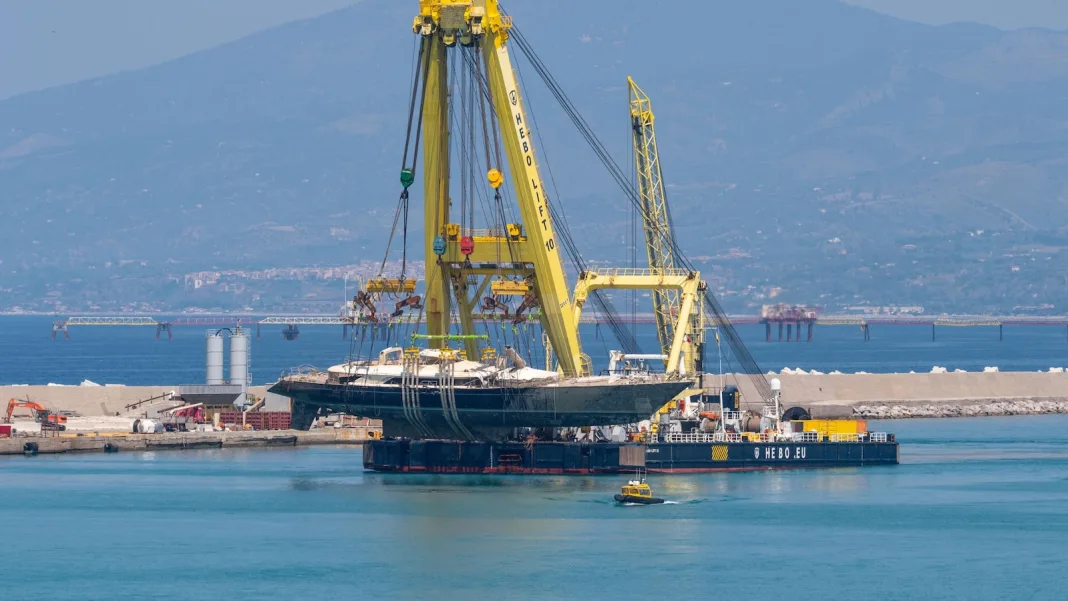Tuesday, July 22, 2025

A scary event at Delhi Airport saw an Air India Airbus A321who landed from Hong Kong have a hazardous APU (auxiliary power unit) fire after landing. The fire that destroyed much of the plane has prompted urgent questions over the airline’s aircraft maintenance procedures and the safety of the operation in general. Thankfully, no one onboard was injured and there was no damage to the fuselage, but there are clearly immediate questions raised about the soundness of regular maintenance and a full investigation into the cause of the shift is already underway.
A potentially dangerous incident unfolded at Delhi’s Indira Gandhi International Airport on Tuesday when an Air India Airbus A321 (TV-TVG) experienced a fire in its auxiliary power unit (APU) shortly after passengers disembarked from a flight arriving from Hong Kong. The aircraft, which had just completed its journey, was left damaged, though fortunately, both the passengers and crew were unharmed. Authorities have launched an investigation, with preliminary reports suggesting the fire could have been linked to a maintenance issue.
A Near-Miss at Delhi Airport
The APU is a critical component of the aircraft, providing power to various systems while the aircraft is on the ground. It operates independently of the engines, making it especially vital when the aircraft is on the tarmac and not yet connected to external power sources. In this instance, however, the APU malfunctioned, catching fire as passengers were in the process of disembarking. Thankfully, the incident occurred after passengers had safely left the aircraft, avoiding any potential injuries or fatalities.
Air India swiftly reported the fire to the Directorate General of Civil Aviation (DGCA), the regulator responsible for overseeing aviation safety in India. The airline has also indicated that the cause of the fire may be linked to a mechanical or maintenance issue, though further investigations are required to confirm this hypothesis.
Global Incidents Highlighting APU Failures
The Air India A321 incident is not an isolated case in the global aviation industry. There have been numerous reports of APU fires or failures on the ground, as well as inflight, underscoring the need for increased vigilance when it comes to aircraft maintenance and safety protocols.
One such high-profile event occurred in June 2016, when a fully loaded Airbus A330, operated by a foreign airline, was parked at London Heathrow. As passengers disembarked, smoke began to fill the cabin, prompting an emergency evacuation. Investigators later determined that the APU failure was caused by a defective seal that allowed hot oil to enter the aircraft’s bleed air supply, leading to the smoke and safety concerns. The incident underlined the importance of thorough APU inspections, particularly before aircraft are cleared for flight or when they are parked on the tarmac.
Another notable event took place in July 2013 at Paris Charles de Gaulle Airport, where passengers boarding an Air France Boeing 777-300 experienced a burning smell and the appearance of thin smoke inside the cabin. The crew acted quickly and initiated an evacuation as a precautionary measure. Investigations revealed that the source of the smoke was again related to the aircraft’s APU, with an internal malfunction triggering the incident. Fortunately, no injuries were reported, but the event raised serious concerns about the reliability of APUs, especially when they are critical to ensuring the safety and comfort of passengers and crew.
APU Failures and the Need for Improved Maintenance Protocols
The APU is an essential component in modern aircraft, ensuring that electrical systems, air conditioning, and other functions are maintained during periods when the engines are not running. Although the APU is typically a reliable system, its failure can lead to significant safety concerns. Malfunctions like those seen in the Air India, Air France, and foreign airline cases are a reminder that even small mechanical issues with an APU can escalate quickly, particularly when not identified and addressed promptly during routine maintenance checks.
In the case of the Air India Airbus A321, the airline’s prompt response and reporting to the DGCA demonstrate the importance of adhering to aviation safety standards and the regulatory requirements of aircraft maintenance. Maintenance personnel are tasked with conducting regular inspections to ensure all aircraft components, including the APU, are operating within specified tolerances. Regular testing, particularly for seals, oil levels, and bleed air systems, is crucial for detecting and mitigating any potential hazards before they result in dangerous incidents.
The incident also raises questions about the consistency and frequency of maintenance checks, especially for older aircraft in the fleet. While the A321 is generally considered a reliable aircraft, issues with its auxiliary power unit could be more common in older models that have undergone significant wear and tear over time.
Preventing Future APU Failures
To prevent similar incidents, the aviation industry may need to adopt stricter maintenance schedules for APUs, particularly as aircraft age. Enhanced monitoring of the APU’s performance during both flight and ground operations could help detect early warning signs of potential failure. Additionally, there should be a stronger emphasis on training for maintenance crews to identify and address APU issues before they escalate into full-blown emergencies.
Airlines should also invest in more advanced diagnostics tools that can detect abnormalities in the APU’s performance early, allowing for faster response times and fewer chances for a catastrophic failure. This could include the use of predictive maintenance technologies, which use data analytics to identify trends and forecast potential issues before they occur.
Furthermore, aviation regulators like the DGCA, the European Union Aviation Safety Agency (EASA), and the U.S. Federal Aviation Administration (FAA) must continue to strengthen their safety oversight, ensuring that all airlines adhere to the highest standards of operational safety. This includes regular audits of aircraft maintenance practices, especially for critical components such as the APU.
Conclusion
The fire aboard the Air India Airbus A321 is a reminder of the critical role that auxiliary power units play in the overall safety and functioning of an aircraft. While the incident did not result in any injuries, it underscores the need for airlines and regulatory bodies to continue prioritizing the reliability and safety of APUs. With further investigation underway, the aviation industry will undoubtedly look closely at this event and others like it, striving to prevent similar incidents and enhance the safety of both passengers and crew in the future.







